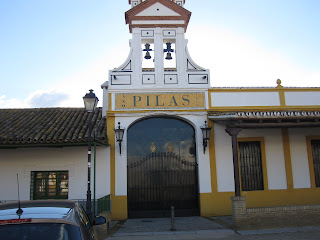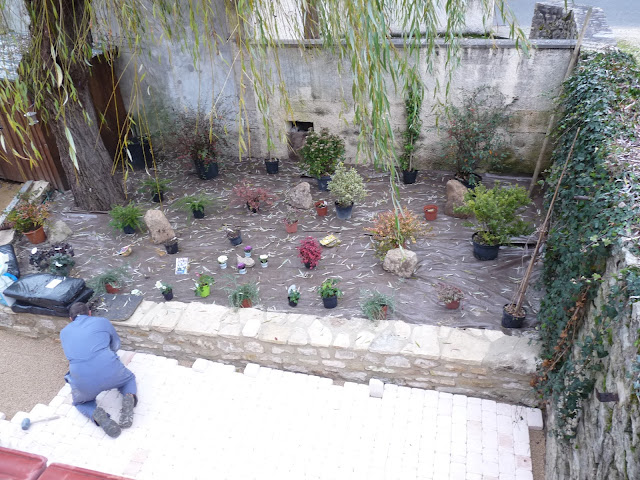In a restaurant near Granada, at the other end of Andalusia from El Rocio, the waitress told me about how she and her family and friends all make a pilgrimage to El Rocio in May. She pointed out the photos that lined the walls, images of the virgin statue, shots of oxen-drawn conestoga wagons, people riding horseback in the streets. The Romeria, they call it. We were told a lot of Spaniards from El Rocio migrated to the US West.
There seems to be a lot of competition among Andalusian towns and cities but danged if I know over what. The Pallio in Siena, Italy is a horse race and I understand horse races. The competition here seems to be over which town team gets to carry this big image of the Virgin Mary around town. There are supposedly lots of fist fights over this. I don't get it either.
The town has a half dozen streets but all of them are gigantically wide. We saw pictures that confirm that as many as a million people come for the Romaria. Oh, and I should say we were told there is a lot of hanky panky of all types during the week or so celebrations. Lots of fighting, drinking, and lovemaking.
These streets after a couple days of rain really looked like Vermont roads at mud season but scaled up 20X.
Some of the streets had been graded to confine the water to a center strip.
These streets after a couple days of rain really looked like Vermont roads at mud season but scaled up 20X.
Some of the streets had been graded to confine the water to a center strip.
El Rocio is pronounced "rothio" I loved all the contagious lisping in Spanish and spent the whole visit lisping in English too.
 The pilgrims are not just devoted to the statue, they are as loyal to their "hermandad", the "confrerie" as my father was to his bowling team. The lots of Andalusian towns sponsor a hermandad which means, in most cases, they have a sort of clubhouse in El Rocio. I dont think these clubhouses are lodging but I'm not sure. I couldn't find an open real estate office during my off season visit, but we heard that ordinary houses sell for in the neighborhood of a million euros. You have to book a house or hotel room a year or more in advance.
The pilgrims are not just devoted to the statue, they are as loyal to their "hermandad", the "confrerie" as my father was to his bowling team. The lots of Andalusian towns sponsor a hermandad which means, in most cases, they have a sort of clubhouse in El Rocio. I dont think these clubhouses are lodging but I'm not sure. I couldn't find an open real estate office during my off season visit, but we heard that ordinary houses sell for in the neighborhood of a million euros. You have to book a house or hotel room a year or more in advance.
Here's the layout of the town.
Malaga is one of the biggest cities in Andalusia but its "clubhouse" was not even the fanciest.
Here's the gorgeous saltwater marsh that El Rocio is built along.


















































